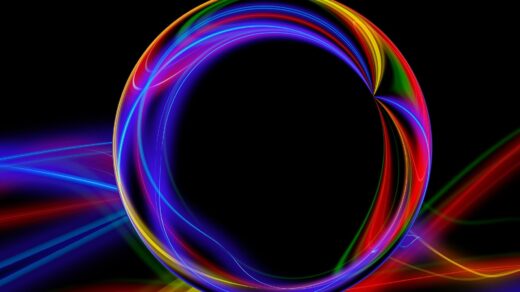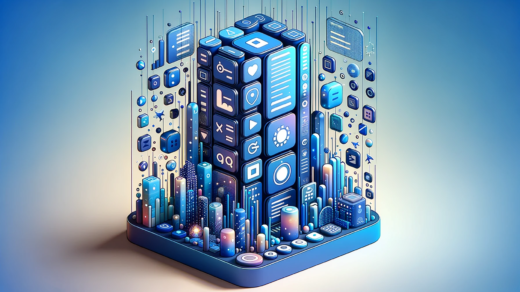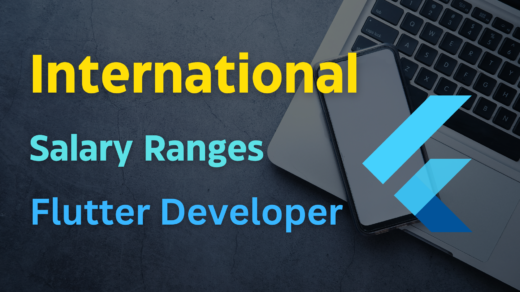Welcome to Day 5 of our exciting Flutter journey! So far, we’ve covered why Flutter is great and learned the basics of Dart, its programming language. Today, we’re finally diving into the heart of Flutter itself: Widgets!
If you’ve heard anything about Flutter, you’ve probably heard the phrase: “Everything is a Widget!” This isn’t just a catchy slogan; it’s the fundamental idea behind how you build user interfaces (UIs) in Flutter. Let’s break down what that really means in a super easy way.
“Everything is a Widget!”: The Big Idea
Imagine you’re building something with LEGOs. Every single piece, no matter how small or big – a single brick, a window, a door, a roof, even the entire house – is a LEGO piece. You combine these pieces to create bigger structures.
In Flutter, it’s exactly like that!
- A Widget is the basic building block for anything you see on your app’s screen.
- A piece of text? That’s a widget (
Text). - An image? That’s a widget (
Image). - A button? That’s a widget (
ElevatedButton). - Even things you don’t see, like how elements are arranged on the screen (side-by-side or one below another), are also widgets (
Row,Column).
You build your app’s user interface by combining many small widgets into larger, more complex widgets. It’s like stacking LEGOs to build your dream app!
Stateless vs. Stateful Widgets: When Things Change (or Don’t)
This is a key distinction in Flutter. Think about a sign:
- Stateless Widget (The Fixed Sign):
- Imagine a sign that just says “Welcome!” It never changes. It just sits there, always displaying the same message.
- A Stateless Widget is like this. It doesn’t change its appearance after it’s first drawn on the screen. It doesn’t “remember” anything about what happened.
- Use it when: The information it displays is static and doesn’t need to update (e.g., a fixed title, a simple icon, a decorative image).
- Example: The
Textwidget displaying a fixed message, or anIconwidget.
- Stateful Widget (The Scoreboard):
- Now imagine a basketball scoreboard. The score changes constantly as points are scored. It needs to “remember” the current score and update its display whenever the score changes.
- A Stateful Widget is like this scoreboard. It can change its appearance after it’s first drawn. It has “state” – data that can change over time and cause the widget to redraw itself.
- Use it when: The UI needs to react to user input, data changes, or other events (e.g., a counter that increments, a checkbox that can be checked/unchecked, a list that loads new items).
- Example: A button that changes color when pressed, or a
TextFieldwhere you type.
The magic of Stateful Widgets is that when their “state” changes, Flutter is super efficient and only redraws the necessary parts of the screen, making your app fast and smooth.
The Widget Tree: How Widgets Are Organized
Since everything is a widget, your entire app’s UI forms a giant “tree” structure.
- At the very top is your main app widget.
- Below it are other widgets that make up your app’s main sections.
- Each of those sections contains more widgets, and so on, down to the smallest pieces like individual letters in a word.
This “Widget Tree” helps Flutter understand how your UI is structured and how to draw it efficiently. It also helps you, the developer, organize your code logically.
MyApp (Root Widget)
└── MaterialApp (Provides app-wide styling, navigation)
└── Scaffold (Basic visual structure: app bar, body, etc.)
├── AppBar (Top bar)
│ └── Text ('My App Title')
└── Center (Centers its child)
└── Column (Arranges children vertically)
├── Text ('Hello, Flutter!')
├── ElevatedButton (A button)
│ └── Text ('Click Me!')
└── Image (A picture)
You won’t always see this tree explicitly, but understanding that your widgets are nested inside each other is crucial for building layouts.
Basic Widgets You’ll Use All the Time
Let’s look at some of the most common widgets you’ll start using right away:
Text: Displays a string of text.Text('Hello, World!'); Text('My App Name', style: TextStyle(fontSize: 24, fontWeight: FontWeight.bold));Image: Displays an image. You can load images from your app’s assets (local files) or from the internet.Image.asset('assets/my_image.png'); // From your project Image.network('https://example.com/logo.png'); // From the internetIcon: Displays a visual icon, often from Flutter’s built-in icon library (Material Icons).Icon(Icons.star); Icon(Icons.favorite, color: Colors.red, size: 30);Container: A highly versatile widget that’s like a blank canvas. You can give it a size, color, padding, margin, borders, and more. It’s often used to group other widgets or add visual styling.Container( color: Colors.blue, padding: EdgeInsets.all(16.0), child: Text('I am inside a blue container!'), );
These basic widgets are your first set of LEGO bricks. You’ll combine them to create more complex and beautiful UIs.
Understanding Widgets: Everything is a Widget!
Welcome to the core of Flutter’s UI! Here, you’ll explore how widgets are the building blocks of every Flutter app.
“Everything is a Widget!”: The Big Idea
Imagine building with LEGOs. Every piece, big or small, is a LEGO. In Flutter, every visual element, every layout instruction, every interaction point—it’s all a “Widget.” You combine these small, specialized widgets to create your entire app’s user interface.
The Fundamental Building Block
Every element you see (or even those that arrange other elements) is a widget.
Stateless vs. Stateful Widgets: When Things Change (or Don’t)
Widgets come in two main flavors, depending on whether their appearance can change after they are first drawn. This section explains the difference and provides an interactive example of a Stateful Widget.
The Widget Tree: How Widgets Are Organized
Since everything is a widget, your app’s entire user interface forms a hierarchical “tree” structure. This tree helps Flutter efficiently understand and draw your UI.
This simplified diagram shows how widgets are nested within each other.
Basic Widgets You’ll Use All the Time
These are your fundamental LEGO bricks. You’ll combine them constantly to build your app’s visual elements.
Conclusion
Today, you’ve grasped the core concept of Flutter: everything is a widget! You now understand the difference between Stateless and Stateful widgets and how your app’s UI is structured in a Widget Tree. You’ve also met some of the most fundamental widgets you’ll use daily.
Tomorrow, on Day 6, we’ll put these concepts into practice. We’ll learn about Layout Widgets like Row, Column, and Stack to arrange your widgets on the screen and build your very first structured UI! Get ready to see your app take shape!



